Xuhui Jiang
LongFaith: Enhancing Long-Context Reasoning in LLMs with Faithful Synthetic Data
Feb 18, 2025Abstract:Despite the growing development of long-context large language models (LLMs), data-centric approaches relying on synthetic data have been hindered by issues related to faithfulness, which limit their effectiveness in enhancing model performance on tasks such as long-context reasoning and question answering (QA). These challenges are often exacerbated by misinformation caused by lack of verification, reasoning without attribution, and potential knowledge conflicts. We propose LongFaith, a novel pipeline for synthesizing faithful long-context reasoning instruction datasets. By integrating ground truth and citation-based reasoning prompts, we eliminate distractions and improve the accuracy of reasoning chains, thus mitigating the need for costly verification processes. We open-source two synthesized datasets, LongFaith-SFT and LongFaith-PO, which systematically address multiple dimensions of faithfulness, including verified reasoning, attribution, and contextual grounding. Extensive experiments on multi-hop reasoning datasets and LongBench demonstrate that models fine-tuned on these datasets significantly improve performance. Our ablation studies highlight the scalability and adaptability of the LongFaith pipeline, showcasing its broad applicability in developing long-context LLMs.
A Survey on LLM-as-a-Judge
Nov 23, 2024Abstract:Accurate and consistent evaluation is crucial for decision-making across numerous fields, yet it remains a challenging task due to inherent subjectivity, variability, and scale. Large Language Models (LLMs) have achieved remarkable success across diverse domains, leading to the emergence of "LLM-as-a-Judge," where LLMs are employed as evaluators for complex tasks. With their ability to process diverse data types and provide scalable, cost-effective, and consistent assessments, LLMs present a compelling alternative to traditional expert-driven evaluations. However, ensuring the reliability of LLM-as-a-Judge systems remains a significant challenge that requires careful design and standardization. This paper provides a comprehensive survey of LLM-as-a-Judge, addressing the core question: How can reliable LLM-as-a-Judge systems be built? We explore strategies to enhance reliability, including improving consistency, mitigating biases, and adapting to diverse assessment scenarios. Additionally, we propose methodologies for evaluating the reliability of LLM-as-a-Judge systems, supported by a novel benchmark designed for this purpose. To advance the development and real-world deployment of LLM-as-a-Judge systems, we also discussed practical applications, challenges, and future directions. This survey serves as a foundational reference for researchers and practitioners in this rapidly evolving field.
Retrieval, Reasoning, Re-ranking: A Context-Enriched Framework for Knowledge Graph Completion
Nov 12, 2024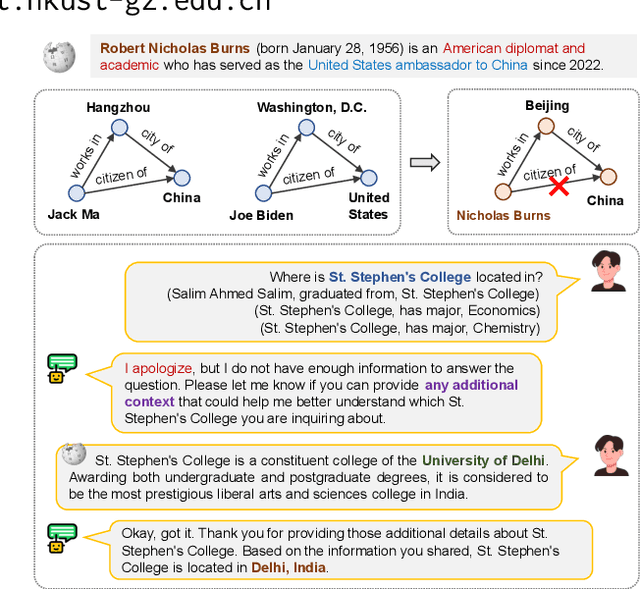
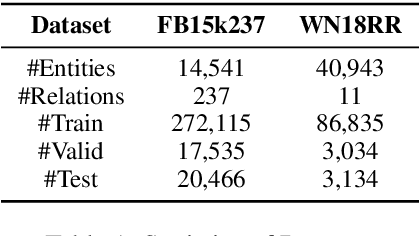
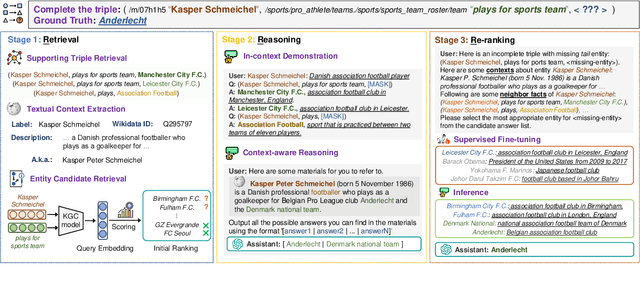
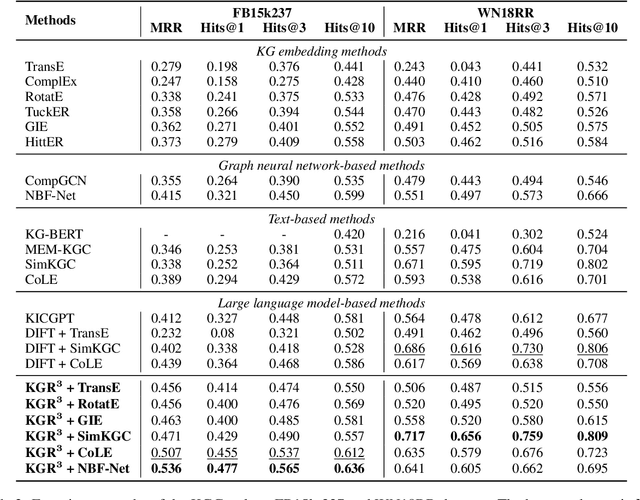
Abstract:The Knowledge Graph Completion~(KGC) task aims to infer the missing entity from an incomplete triple. Existing embedding-based methods rely solely on triples in the KG, which is vulnerable to specious relation patterns and long-tail entities. On the other hand, text-based methods struggle with the semantic gap between KG triples and natural language. Apart from triples, entity contexts (e.g., labels, descriptions, aliases) also play a significant role in augmenting KGs. To address these limitations, we propose KGR3, a context-enriched framework for KGC. KGR3 is composed of three modules. Firstly, the Retrieval module gathers supporting triples from the KG, collects plausible candidate answers from a base embedding model, and retrieves context for each related entity. Then, the Reasoning module employs a large language model to generate potential answers for each query triple. Finally, the Re-ranking module combines candidate answers from the two modules mentioned above, and fine-tunes an LLM to provide the best answer. Extensive experiments on widely used datasets demonstrate that KGR3 consistently improves various KGC methods. Specifically, the best variant of KGR3 achieves absolute Hits@1 improvements of 12.3% and 5.6% on the FB15k237 and WN18RR datasets.
Context-aware Inductive Knowledge Graph Completion with Latent Type Constraints and Subgraph Reasoning
Oct 22, 2024



Abstract:Inductive knowledge graph completion (KGC) aims to predict missing triples with unseen entities. Recent works focus on modeling reasoning paths between the head and tail entity as direct supporting evidence. However, these methods depend heavily on the existence and quality of reasoning paths, which limits their general applicability in different scenarios. In addition, we observe that latent type constraints and neighboring facts inherent in KGs are also vital in inferring missing triples. To effectively utilize all useful information in KGs, we introduce CATS, a novel context-aware inductive KGC solution. With sufficient guidance from proper prompts and supervised fine-tuning, CATS activates the strong semantic understanding and reasoning capabilities of large language models to assess the existence of query triples, which consist of two modules. First, the type-aware reasoning module evaluates whether the candidate entity matches the latent entity type as required by the query relation. Then, the subgraph reasoning module selects relevant reasoning paths and neighboring facts, and evaluates their correlation to the query triple. Experiment results on three widely used datasets demonstrate that CATS significantly outperforms state-of-the-art methods in 16 out of 18 transductive, inductive, and few-shot settings with an average absolute MRR improvement of 7.2%.
Think-on-Graph 2.0: Deep and Interpretable Large Language Model Reasoning with Knowledge Graph-guided Retrieval
Jul 15, 2024



Abstract:Retrieval-augmented generation (RAG) has significantly advanced large language models (LLMs) by enabling dynamic information retrieval to mitigate knowledge gaps and hallucinations in generated content. However, these systems often falter with complex reasoning and consistency across diverse queries. In this work, we present Think-on-Graph 2.0, an enhanced RAG framework that aligns questions with the knowledge graph and uses it as a navigational tool, which deepens and refines the RAG paradigm for information collection and integration. The KG-guided navigation fosters deep and long-range associations to uphold logical consistency and optimize the scope of retrieval for precision and interoperability. In conjunction, factual consistency can be better ensured through semantic similarity guided by precise directives. ToG${2.0}$ not only improves the accuracy and reliability of LLMs' responses but also demonstrates the potential of hybrid structured knowledge systems to significantly advance LLM reasoning, aligning it closer to human-like performance. We conducted extensive experiments on four public datasets to demonstrate the advantages of our method compared to the baseline.
Context Graph
Jun 28, 2024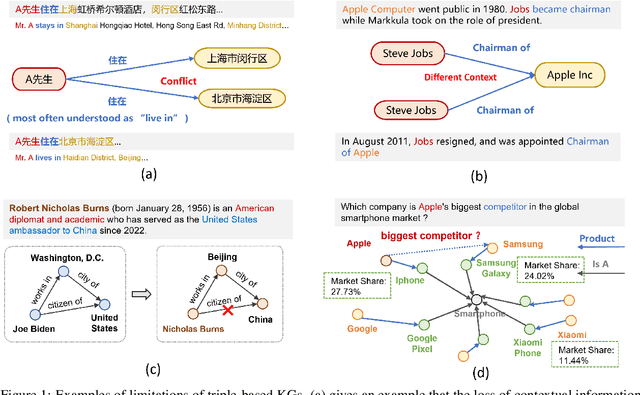
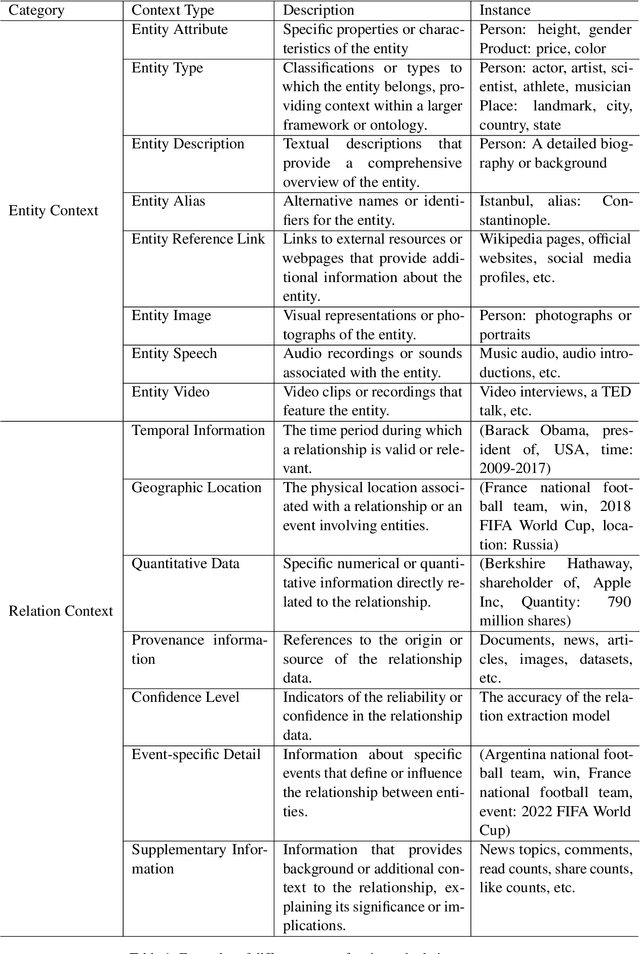
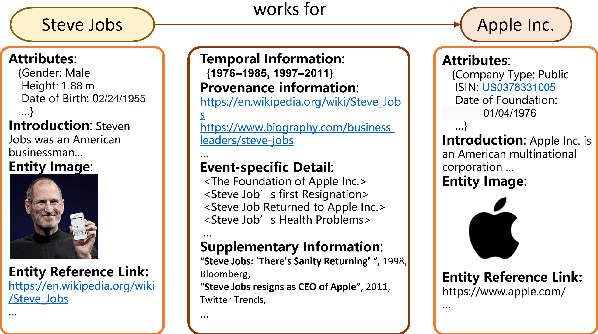
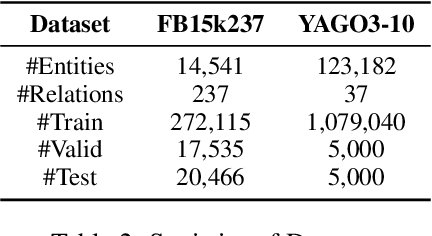
Abstract:Knowledge Graphs (KGs) are foundational structures in many AI applications, representing entities and their interrelations through triples. However, triple-based KGs lack the contextual information of relational knowledge, like temporal dynamics and provenance details, which are crucial for comprehensive knowledge representation and effective reasoning. Instead, \textbf{Context Graphs} (CGs) expand upon the conventional structure by incorporating additional information such as time validity, geographic location, and source provenance. This integration provides a more nuanced and accurate understanding of knowledge, enabling KGs to offer richer insights and support more sophisticated reasoning processes. In this work, we first discuss the inherent limitations of triple-based KGs and introduce the concept of CGs, highlighting their advantages in knowledge representation and reasoning. We then present a context graph reasoning \textbf{CGR$^3$} paradigm that leverages large language models (LLMs) to retrieve candidate entities and related contexts, rank them based on the retrieved information, and reason whether sufficient information has been obtained to answer a query. Our experimental results demonstrate that CGR$^3$ significantly improves performance on KG completion (KGC) and KG question answering (KGQA) tasks, validating the effectiveness of incorporating contextual information on KG representation and reasoning.
Contextual Knowledge Graph
Jun 21, 2024



Abstract:Knowledge Graphs (KGs) are foundational structures in many AI applications, representing entities and their interrelations through triples. However, triple-based KGs lack the contextual information of relational knowledge, like temporal dynamics and provenance details, which are crucial for comprehensive knowledge representation and effective reasoning. Instead, \textbf{Contextual Knowledge Graphs} (CKGs) expand upon the conventional structure by incorporating additional information such as time validity, geographic location, and source provenance. This integration provides a more nuanced and accurate understanding of knowledge, enabling KGs to offer richer insights and support more sophisticated reasoning processes. In this work, we first discuss the inherent limitations of triple-based KGs and introduce the concept of contextual KGs, highlighting their advantages in knowledge representation and reasoning. We then present \textbf{KGR$^3$, a context-enriched KG reasoning paradigm} that leverages large language models (LLMs) to retrieve candidate entities and related contexts, rank them based on the retrieved information, and reason whether sufficient information has been obtained to answer a query. Our experimental results demonstrate that KGR$^3$ significantly improves performance on KG completion (KGC) and KG question answering (KGQA) tasks, validating the effectiveness of incorporating contextual information on KG representation and reasoning.
Move Beyond Triples: Contextual Knowledge Graph Representation and Reasoning
Jun 17, 2024



Abstract:Knowledge Graphs (KGs) are foundational structures in many AI applications, representing entities and their interrelations through triples. However, triple-based KGs lack the contextual information of relational knowledge, like temporal dynamics and provenance details, which are crucial for comprehensive knowledge representation and effective reasoning. Instead, \textbf{Contextual Knowledge Graphs} (CKGs) expand upon the conventional structure by incorporating additional information such as time validity, geographic location, and source provenance. This integration provides a more nuanced and accurate understanding of knowledge, enabling KGs to offer richer insights and support more sophisticated reasoning processes. In this work, we first discuss the inherent limitations of triple-based KGs and introduce the concept of contextual KGs, highlighting their advantages in knowledge representation and reasoning. We then present \textbf{KGR$^3$, a context-enriched KG reasoning paradigm} that leverages large language models (LLMs) to retrieve candidate entities and related contexts, rank them based on the retrieved information, and reason whether sufficient information has been obtained to answer a query. Our experimental results demonstrate that KGR$^3$ significantly improves performance on KG completion (KGC) and KG question answering (KGQA) tasks, validating the effectiveness of incorporating contextual information on KG representation and reasoning.
Unlocking the Power of Large Language Models for Entity Alignment
Feb 23, 2024



Abstract:Entity Alignment (EA) is vital for integrating diverse knowledge graph (KG) data, playing a crucial role in data-driven AI applications. Traditional EA methods primarily rely on comparing entity embeddings, but their effectiveness is constrained by the limited input KG data and the capabilities of the representation learning techniques. Against this backdrop, we introduce ChatEA, an innovative framework that incorporates large language models (LLMs) to improve EA. To address the constraints of limited input KG data, ChatEA introduces a KG-code translation module that translates KG structures into a format understandable by LLMs, thereby allowing LLMs to utilize their extensive background knowledge to improve EA accuracy. To overcome the over-reliance on entity embedding comparisons, ChatEA implements a two-stage EA strategy that capitalizes on LLMs' capability for multi-step reasoning in a dialogue format, thereby enhancing accuracy while preserving efficiency. Our experimental results affirm ChatEA's superior performance, highlighting LLMs' potential in facilitating EA tasks.
A Survey on Large Language Model Hallucination via a Creativity Perspective
Feb 02, 2024Abstract:Hallucinations in large language models (LLMs) are always seen as limitations. However, could they also be a source of creativity? This survey explores this possibility, suggesting that hallucinations may contribute to LLM application by fostering creativity. This survey begins with a review of the taxonomy of hallucinations and their negative impact on LLM reliability in critical applications. Then, through historical examples and recent relevant theories, the survey explores the potential creative benefits of hallucinations in LLMs. To elucidate the value and evaluation criteria of this connection, we delve into the definitions and assessment methods of creativity. Following the framework of divergent and convergent thinking phases, the survey systematically reviews the literature on transforming and harnessing hallucinations for creativity in LLMs. Finally, the survey discusses future research directions, emphasizing the need to further explore and refine the application of hallucinations in creative processes within LLMs.
 Add to Chrome
Add to Chrome Add to Firefox
Add to Firefox Add to Edge
Add to Edge